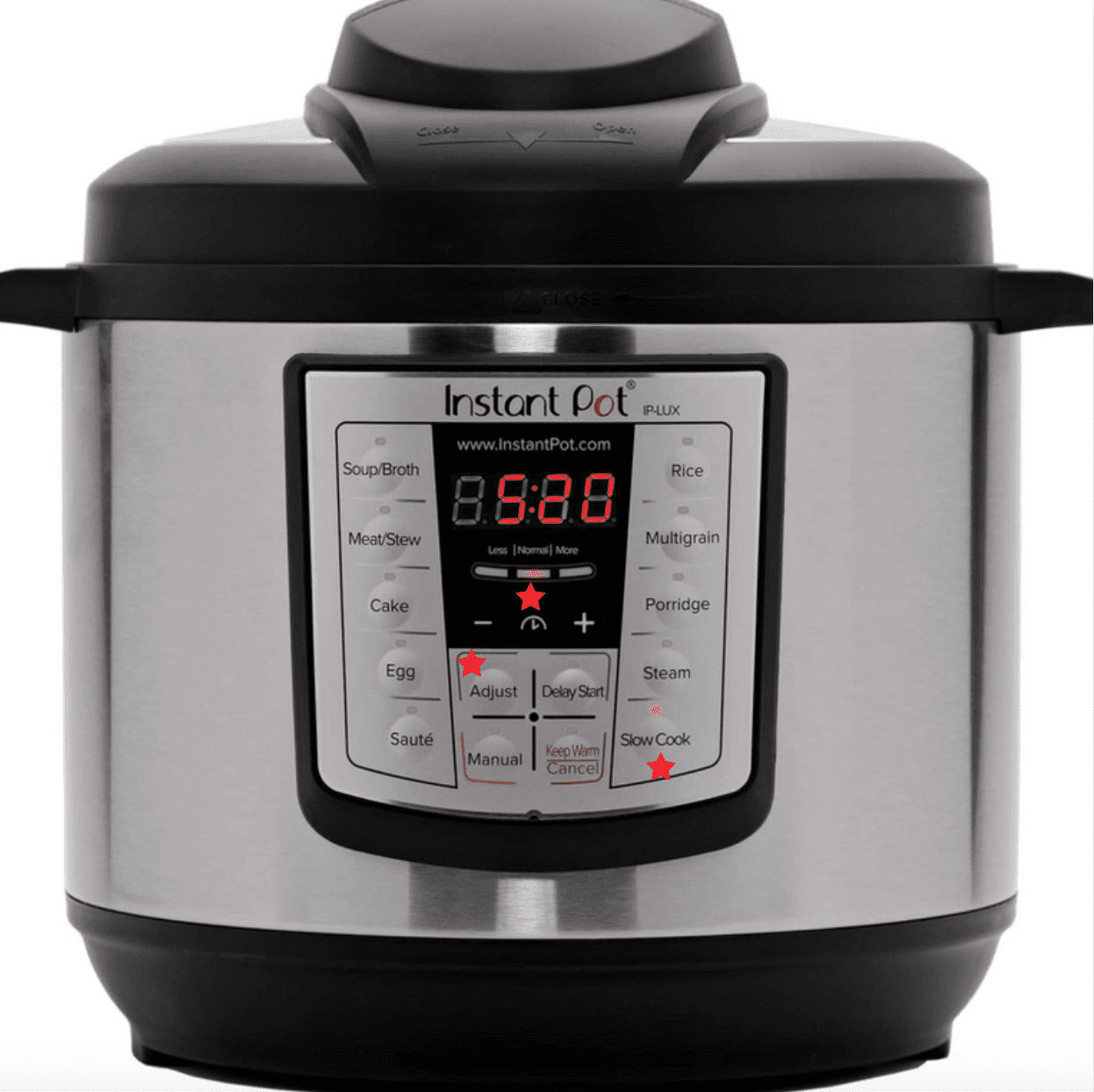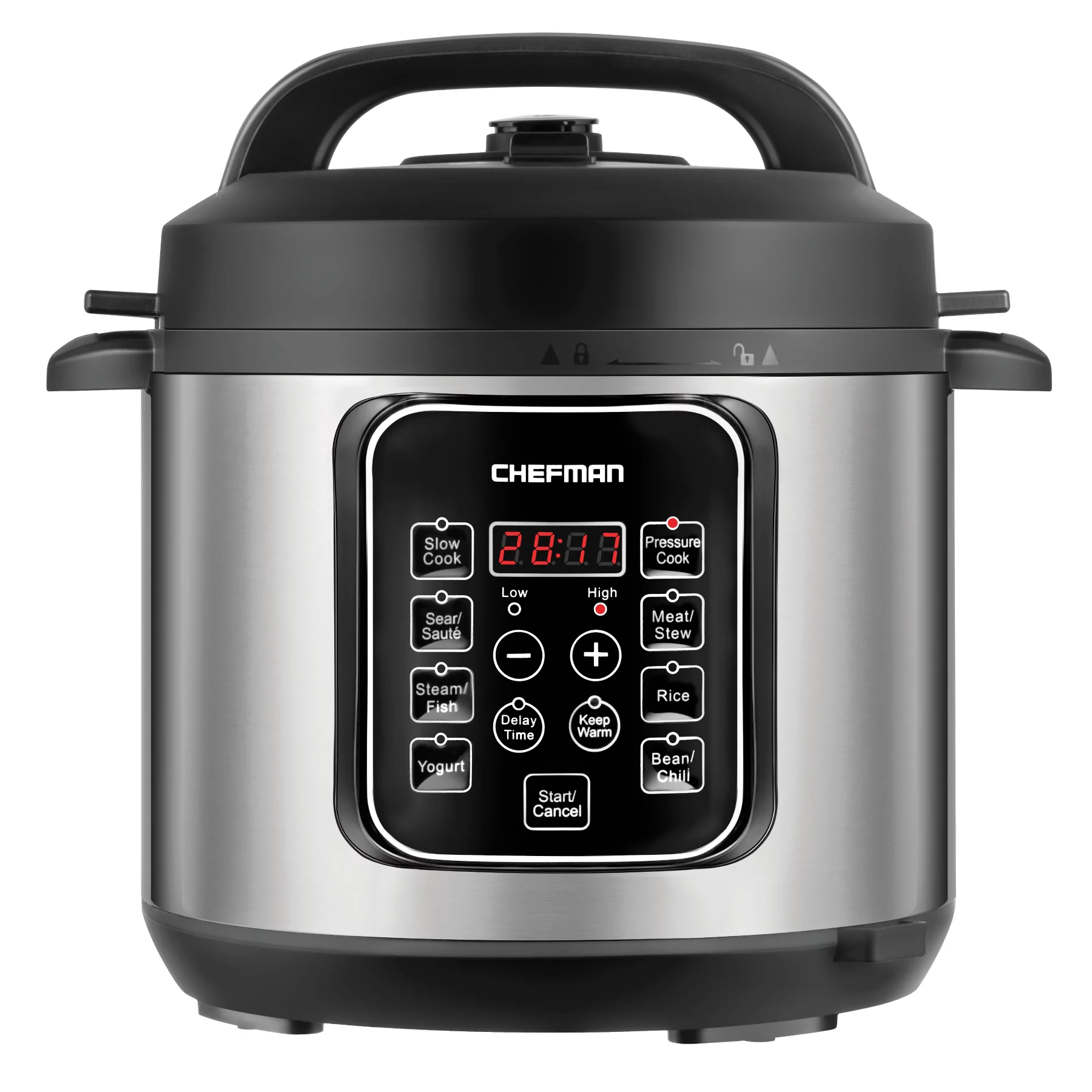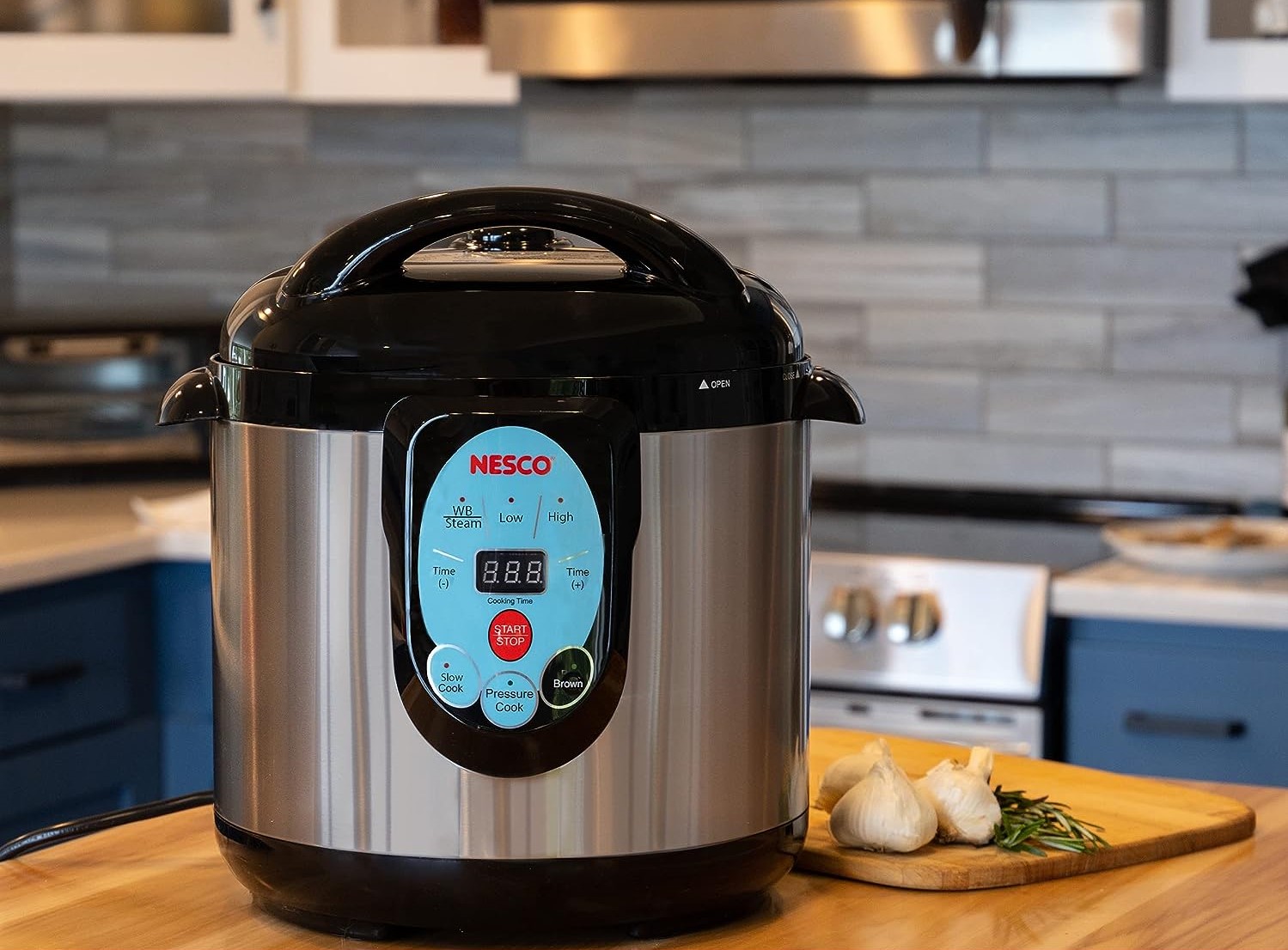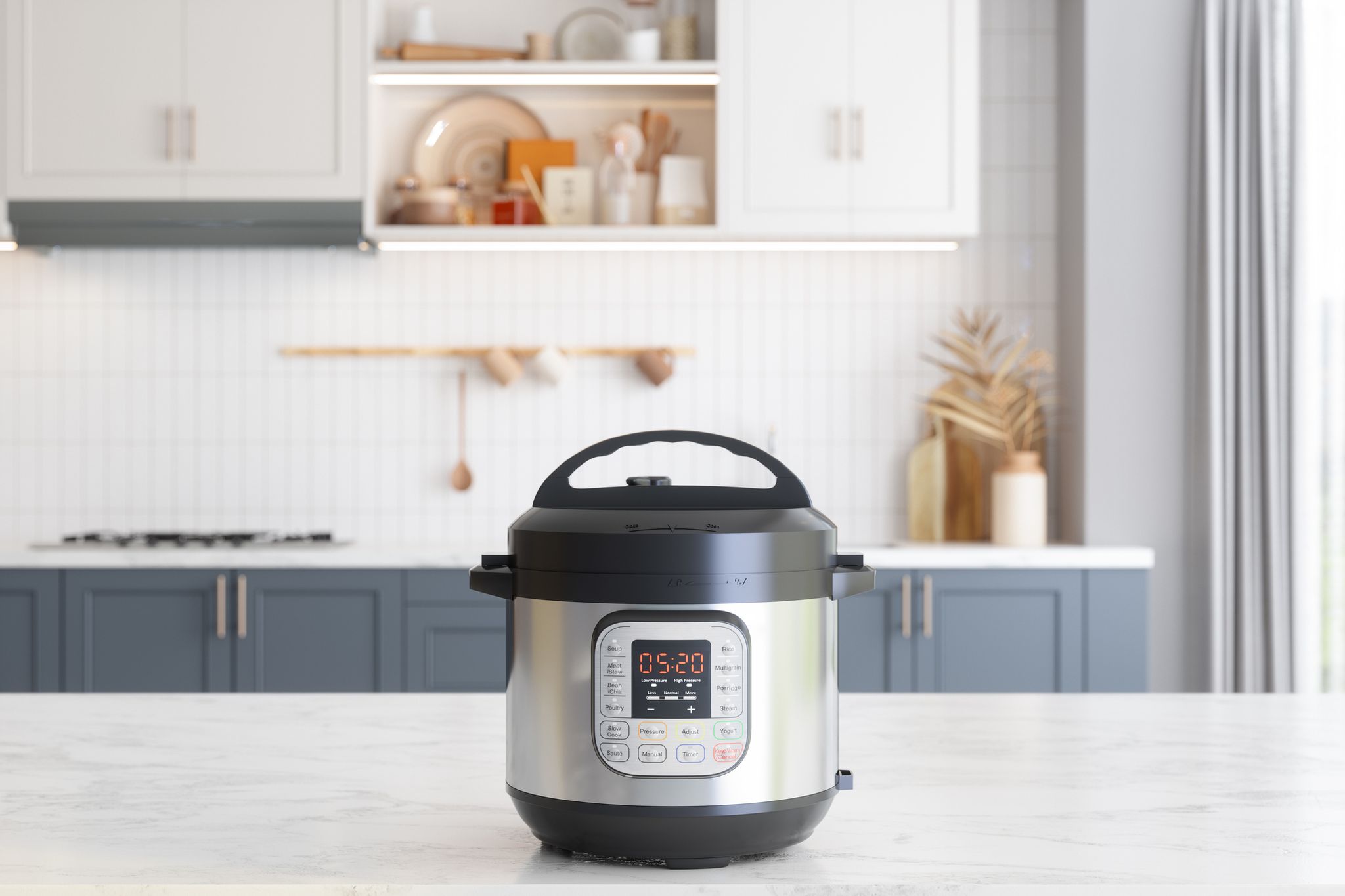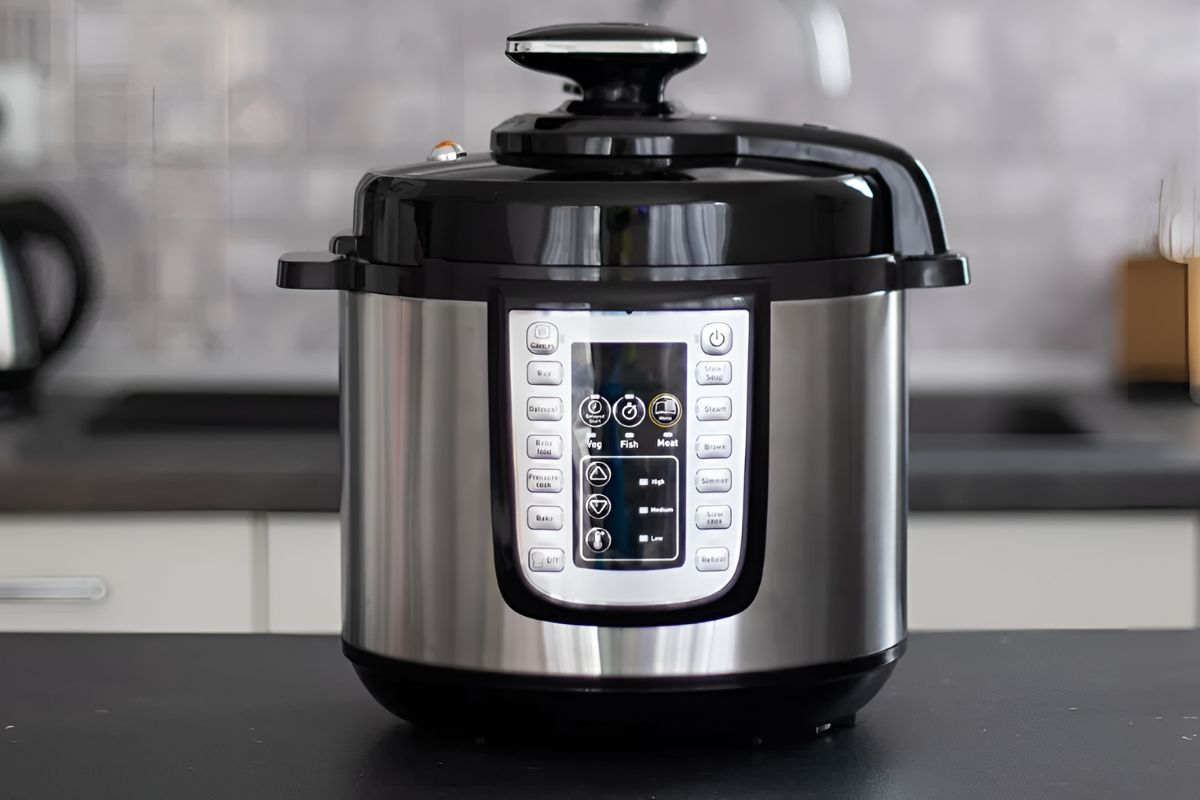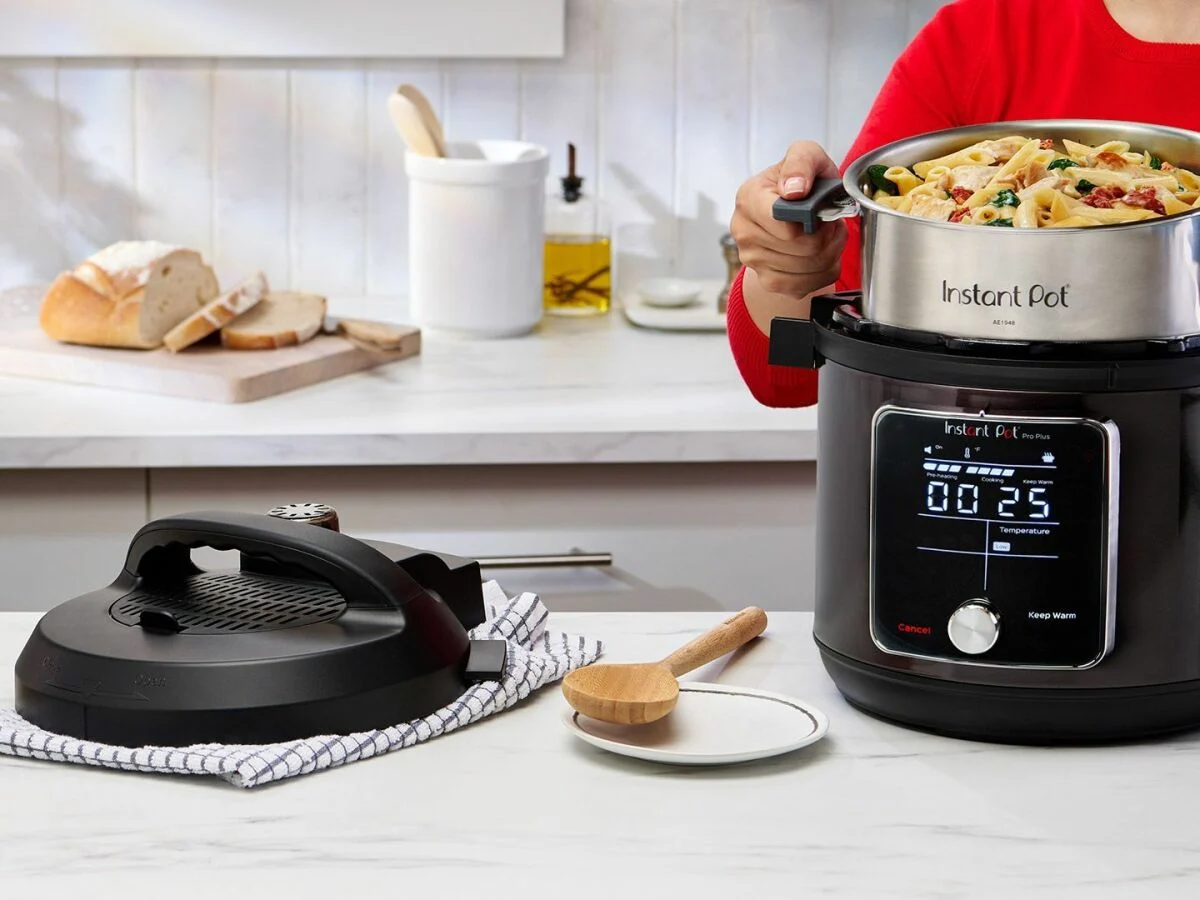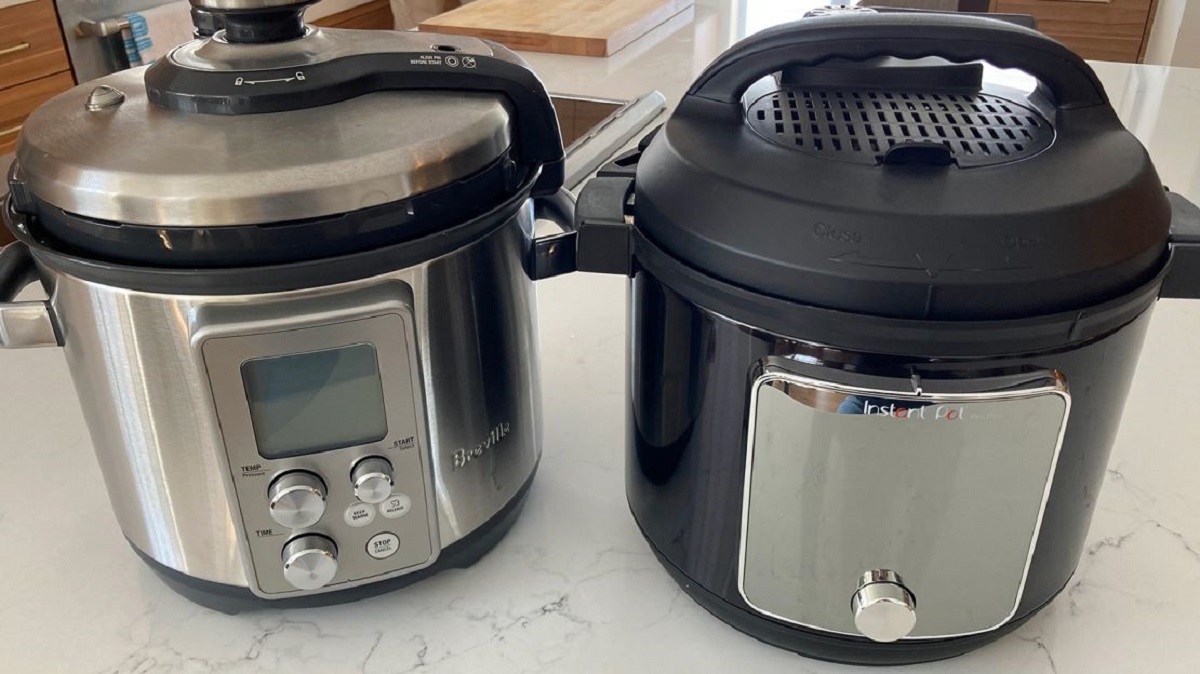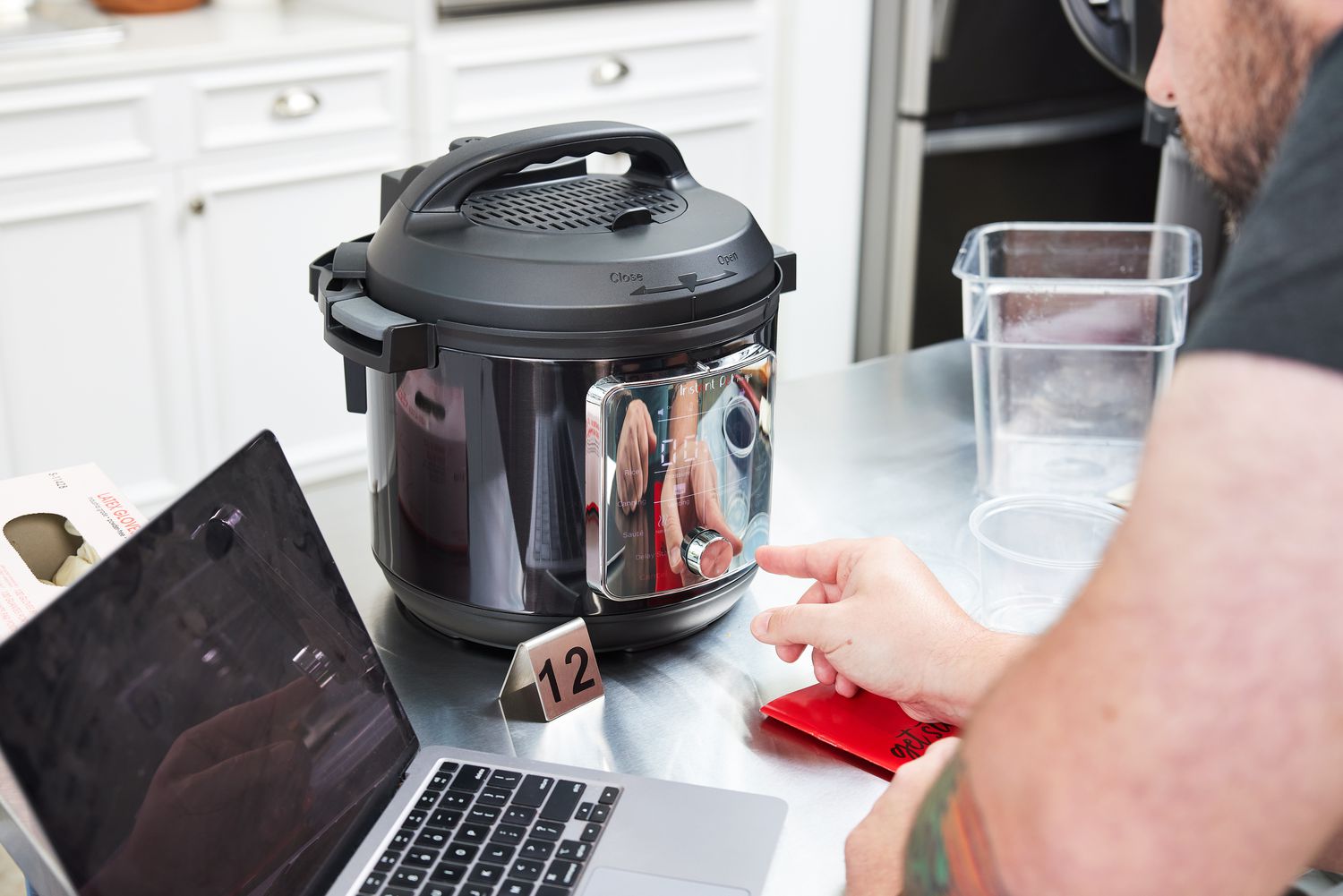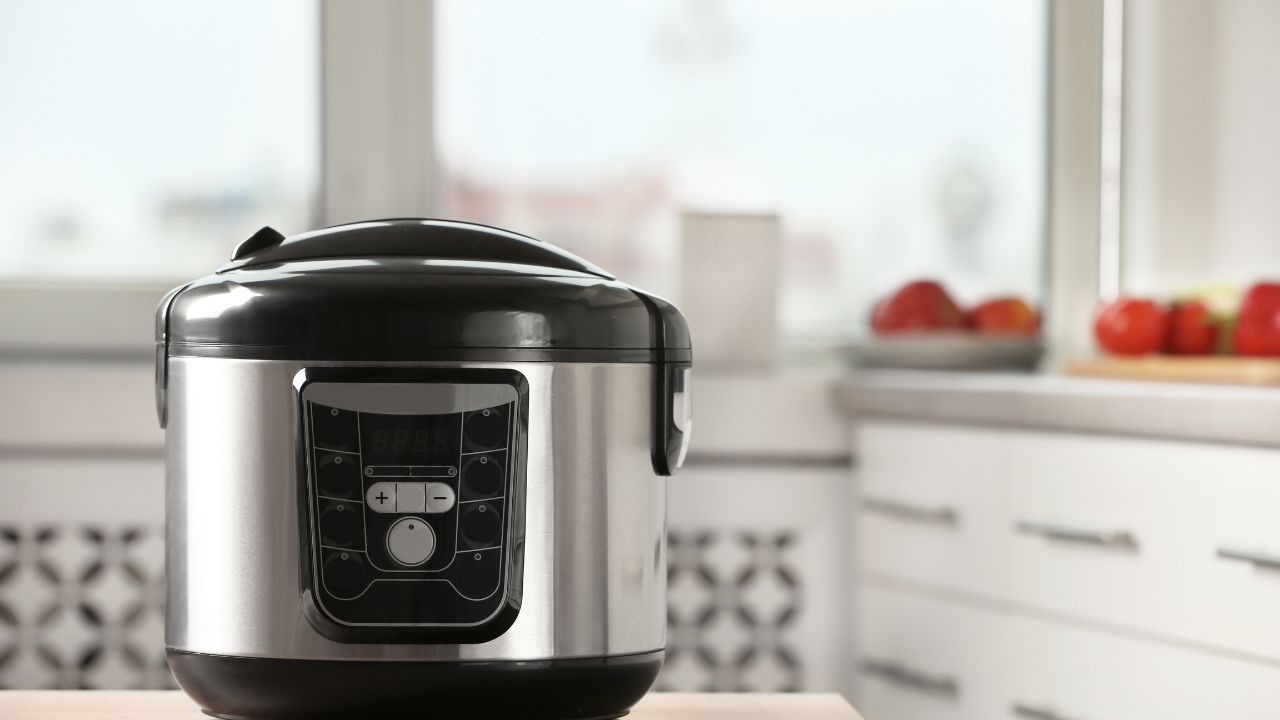Introduction
Welcome to the world of multifunctional cooking appliances! If you own an electric pressure cooker, you may already be aware of its incredible capabilities when it comes to fast and efficient cooking. However, did you know that many electric pressure cookers also have a slow cooker function? That’s right! You can transform your electric pressure cooker into a versatile slow cooker and enjoy all the benefits of slow cooking with just one appliance.
In this article, we will explore how to use an electric pressure cooker as a slow cooker. We’ll delve into the features and benefits of utilizing the slow cooker function on your appliance, as well as provide you with practical tips and tricks for successful slow cooking. Whether you’re a busy individual looking to whip up a comforting slow-cooked meal or a cooking enthusiast eager to explore new functionalities, this guide is for you.
Don’t worry if you’re new to electric pressure cookers or slow cooking in general. We’ll start by giving you a brief overview of electric pressure cookers and how they work. This will help you understand the functionality of your appliance and how the slow cooker function fits into the overall cooking experience.
So, if you’re ready to take your cooking skills to the next level and make the most of your electric pressure cooker, let’s dive into the world of slow cooking with this amazing appliance!
Understanding Electric Pressure Cookers
Before we explore how to use an electric pressure cooker as a slow cooker, let’s take a moment to understand the basics of these appliances. Electric pressure cookers are modern cooking devices that utilize pressure and steam to cook food quickly and efficiently.
Unlike traditional stovetop pressure cookers, electric pressure cookers are designed with built-in controls and safety features. This makes them user-friendly and eliminates the need for constant monitoring during the cooking process.
Electric pressure cookers consist of a durable inner pot, a sealing lid with a pressure release valve, and a control panel for adjusting cooking settings. The lid is equipped with a gasket or a sealing ring that helps create an airtight seal when the pressure builds inside the cooker.
When you cook with an electric pressure cooker, you can choose from various preset settings or manually set the cooking time and pressure level. The appliance then heats up and builds pressure inside, which raises the boiling point of the liquid. The high pressure and steam help tenderize tough cuts of meat, cook grains and beans faster, and infuse flavors into your dishes.
Electric pressure cookers also excel at retaining the nutrients in foods due to their short cooking times. With the sealed cooking environment, vitamins and minerals are trapped in the food instead of being lost in the cooking liquid.
Moreover, many electric pressure cookers come with additional features such as sauté, steam, and slow cook functions. It’s the slow cooker function that allows you to enjoy the slow cooking benefits without requiring a separate appliance.
Now that you understand the basics of electric pressure cookers, let’s move on to exploring the advantages of using them as slow cookers and how to make the most of this functionality.
Benefits of Using an Electric Pressure Cooker as a Slow Cooker
Using your electric pressure cooker as a slow cooker offers numerous benefits that make it a convenient and efficient choice for slow cooking. Here are some advantages of utilizing the slow cooker function on your electric pressure cooker:
Time-Saving: One of the main benefits of using an electric pressure cooker as a slow cooker is the significant reduction in cooking time compared to traditional slow cookers. While traditional slow cookers can take several hours to cook a meal, electric pressure cookers can achieve the same results in a fraction of the time. You can enjoy delicious, tender, and flavorful meals in a matter of hours instead of waiting all day.
Energy Efficiency: Electric pressure cookers are designed to cook efficiently, using less energy compared to conventional cooking methods. When using the slow cooker function, the appliance uses minimal energy to maintain a low and consistent temperature throughout the cooking process, resulting in energy savings.
Versatility: By using your electric pressure cooker as a slow cooker, you have access to a wider range of cooking options in one appliance. In addition to slow cooking, you can utilize other functionalities such as pressure cooking, sautéing, steaming, and more. This versatility allows you to experiment with various cooking methods and recipes, all with a single appliance.
Flavor Enhancement: Slow cooking in an electric pressure cooker allows flavors to meld together and develop over time. The sealed cooking environment helps to retain moisture, resulting in succulent and tender dishes. Whether you’re cooking a hearty stew, tender meats, or flavorful soups, the slow cooker function in your electric pressure cooker will deliver exceptional taste and texture.
Convenient Programming: Most electric pressure cookers come with programmable settings, timers, and delay start options. This means you can set your slow cooker function to start at a specific time, even when you’re not around. This feature is perfect for busy schedules or when you want to come home to a delicious meal ready to be served.
Easy Cleanup: The removable inner pot of electric pressure cookers makes cleanup a breeze. You can use it for both cooking and serving your slow-cooked meals, eliminating the need for multiple pots and pans. The non-stick or stainless steel finish makes it easy to clean, saving you time and effort.
Now that you’re aware of the benefits of using an electric pressure cooker as a slow cooker, let’s move on to learn how to use the slow cooker function on your appliance effectively.
Using the Slow Cooker Function on Your Electric Pressure Cooker
Using the slow cooker function on your electric pressure cooker is a simple and straightforward process. Here are the basic steps to get started:
- Prep your ingredients: Chop vegetables, trim meat, and gather all the necessary ingredients for your slow-cooked recipe.
- Place the inner pot: Insert the inner pot into your electric pressure cooker. Ensure it’s clean and dry before adding the ingredients.
- Add ingredients: Layer your ingredients in the inner pot, following the recipe or your preferences. Make sure not to overfill the pot, leaving some space for ingredients to expand during cooking.
- Set the slow cooker function: Select the slow cooker function on your electric pressure cooker. The control panel may have a dedicated button for slow cooking or an option to manually adjust the temperature and cooking time.
- Adjust temperature and cooking time: Set the desired temperature and cooking time for your recipe. Keep in mind that each electric pressure cooker model may have different temperature settings, so refer to the user manual for specific information.
- Start the slow cooking process: Once you’ve adjusted the settings, press the start button to begin the slow cooking process. The electric pressure cooker will gradually heat up and maintain a steady temperature throughout the cooking time.
- Check the progress: You can periodically check the progress of your slow-cooked recipe by lifting the lid. However, keep in mind that each time you open the lid, you release heat and extend the cooking time. Try to limit the number of times you check on the dish to avoid disruptions.
- Adjust seasoning if necessary: Towards the end of the cooking time, taste the dish and adjust seasonings as needed. You can add herbs, spices, or additional liquid if desired.
- Serve and enjoy: Once the cooking time is complete, carefully remove the inner pot from the electric pressure cooker. Serve your delicious slow-cooked meal and savor the flavors.
It’s important to note that the slow cooker function on electric pressure cookers may not provide the same exact temperature range as dedicated slow cookers. However, with some experimentation and adjustments, you can achieve similar results and enjoy all the benefits of slow cooking.
Now that you know how to use the slow cooker function on your electric pressure cooker, let’s explore how to adjust cooking times for slow cooking in this appliance.
Adjusting Cooking Times for Slow Cooking in an Electric Pressure Cooker
When using your electric pressure cooker as a slow cooker, it’s essential to make adjustments to the cooking times to achieve the best results. Here are some tips for adjusting the cooking times for slow cooking in an electric pressure cooker:
Refer to the recipe: If you’re following a recipe specifically designed for a slow cooker, start by checking the suggested cooking time. This will give you a baseline estimate, but keep in mind that the cooking times may vary depending on the model and brand of your electric pressure cooker.
Consider the recipe ingredients: The type and size of ingredients can affect the cooking times. For example, large cuts of meat or root vegetables will require longer cooking times, while smaller cuts or tender vegetables may cook faster. Take into account the specific ingredients used in your recipe and adjust the cooking time accordingly.
Use the high or low setting: Most electric pressure cookers have multiple temperature settings for the slow cooker function, usually high and low. The high setting tends to cook food faster, while the low setting provides a gentler and longer cooking process. Experiment with both settings to find the right balance for your desired results.
Start with shorter cooking times: If you’re unsure of the exact cooking time, it’s always better to start with a shorter time and check for doneness. You can always continue cooking if needed, but it’s difficult to reverse overcooked food. Monitor the progress and adjust the cooking time accordingly until the dish reaches the desired level of tenderness.
Consider the liquid content: Unlike traditional slow cookers that require a generous amount of liquid, electric pressure cookers utilize steam and pressure to cook food. This means you’ll need less liquid compared to traditional slow cooking methods. Adjust the amount of liquid in your recipe to prevent excessive evaporation or overly diluted flavors.
Remember the natural release time: After the cooking time is complete, it’s important to account for the natural release time required by your electric pressure cooker before opening the lid. The residual heat and pressure inside the cooker continue cooking the food during this time. Refer to the user manual to determine the recommended natural release time and ensure your dish is fully cooked.
By keeping these tips in mind and being mindful of the specific characteristics of your electric pressure cooker, you can effectively adjust the cooking times for slow cooking and achieve exceptional results with your favorite recipes.
Now that you know how to adjust cooking times, let’s move on to some tips and tricks for successful slow cooking with an electric pressure cooker.
Tips and Tricks for Successful Slow Cooking with an Electric Pressure Cooker
Slow cooking with an electric pressure cooker can yield delicious and tender results. To ensure your slow cooking endeavors are a success, here are some tips and tricks to keep in mind:
Choose the right cuts of meat: Opt for tougher cuts of meat with more marbling, such as chuck roast or pork shoulder. These cuts are ideal for slow cooking as the low and slow cooking process helps break down the connective tissues and infuse the meat with flavor.
Sear the meat before slow cooking: For enhanced flavor and texture, consider searing the meat before placing it in the electric pressure cooker. This step helps create a delicious crust and adds depth to the overall dish.
Layer ingredients properly: When adding ingredients to your slow cooker, layer them in the correct order. Start with the vegetables, followed by the meat, and then any liquid or seasonings. This layering technique ensures even cooking and allows flavors to meld together.
Avoid overcrowding the pot: While it can be tempting to fill the pot to the brim, overcrowding can hinder the cooking process. Leave some space for the ingredients to expand and ensure there is enough room for the heat and steam to circulate.
Limit liquid when adapting recipes: When adapting traditional slow cooker recipes for your electric pressure cooker, reduce the amount of liquid used. The sealed environment of the pressure cooker retains moisture, so you won’t need as much liquid as conventional slow cookers.
Experiment with different flavors: Slow cooking in an electric pressure cooker allows flavors to develop and intensify. Take advantage of this by experimenting with different herbs, spices, and seasonings to enhance the taste of your dishes. Don’t be afraid to get creative and try new combinations.
Avoid lifting the lid unnecessarily: Every time you lift the lid, you release heat and extend the cooking time. It’s best to resist the temptation to check on the dish too frequently, as this can affect the overall cooking process. Trust the slow cooking method and refrain from removing the lid unnecessarily.
Use the “Keep Warm” function: Once the slow cooking time is complete, you can use the “Keep Warm” function on your electric pressure cooker to maintain the temperature and keep your dish warm until you’re ready to serve.
Allow for natural release: After slow cooking, it’s important to allow for natural pressure release before opening the lid. This ensures the flavors fully develop, and the dish reaches its desired tenderness. Refer to the manufacturer’s instructions for the recommended natural release time.
Taste and adjust seasonings: Before serving, taste your slow-cooked dish and adjust the seasonings if needed. You can add a pinch of salt, spices, or herbs to enhance the flavors. Remember, slow cooking tends to mellow flavors, so a little extra seasoning can go a long way.
With these tips and tricks, you’re well on your way to mastering slow cooking with your electric pressure cooker. Now, let’s shift our focus to safety tips to keep in mind while using an electric pressure cooker as a slow cooker.
Safety Tips to Keep in Mind While Using an Electric Pressure Cooker as a Slow Cooker
While electric pressure cookers are designed with safety features, it’s still important to follow certain precautions when using them as slow cookers. Here are some essential safety tips to keep in mind:
Read the user manual: Familiarize yourself with the specific safety guidelines outlined in the user manual of your electric pressure cooker. Different models may have varying safety features and instructions, so it’s crucial to understand the guidelines specific to your appliance.
Ensure proper sealing: Before using the slow cooker function, double-check that the sealing ring or gasket on the lid is clean, intact, and properly fitted. A faulty seal can result in steam and pressure leakage, compromising the cooking process and potentially causing accidents.
Avoid overfilling: It’s essential not to overfill the electric pressure cooker when using it as a slow cooker. Follow the manufacturer’s instructions regarding the maximum capacity to prevent excessive pressure buildup and potential splattering of hot liquid.
Release pressure properly: When the slow cooking process is complete, it’s crucial to release the pressure before opening the lid. Follow the recommended release method specified in your electric pressure cooker’s user manual, whether it’s natural release, quick release, or a combination of both.
Avoid touching hot surfaces: The outer casing of the electric pressure cooker can become extremely hot during the cooking process. Always use oven mitts or heat-resistant gloves when handling the appliance to prevent burns or injuries.
Keep children and pets away: To ensure safety, it’s important to keep children and pets away from the electric pressure cooker when it’s in use. The hot surfaces and pressure inside the appliance can pose hazards, so it’s best to create a safe zone and restrict access.
Use the handles for lifting: Electric pressure cookers are equipped with sturdy handles for safe lifting and transport. Always use these handles when moving or carrying the appliance, ensuring a secure grip to prevent accidents.
Follow recommended cooking times and temperatures: Stick to the recommended cooking times and temperatures for your slow-cooked recipes. This ensures that the food reaches the appropriate internal temperature for safe consumption, eliminating the risk of foodborne illnesses.
Avoid storing food in the inner pot: After slow cooking, transfer the leftovers to a separate container for storage. Leaving food in the inner pot for extended periods can promote bacterial growth and compromise food safety.
Maintain regular cleaning and maintenance: Clean your electric pressure cooker thoroughly after each use, following the manufacturer’s instructions. Regular maintenance, such as descaling the interior and checking for any malfunctioning parts, can help ensure safe and reliable operation.
By following these safety tips, you can enjoy the benefits of slow cooking with your electric pressure cooker while prioritizing the well-being of yourself and your loved ones.
Now that we’ve covered safety tips, let’s move on to the next section – cleaning and maintenance of your electric pressure cooker after slow cooking.
Cleaning and Maintenance of Your Electric Pressure Cooker After Slow Cooking
Proper cleaning and maintenance of your electric pressure cooker after slow cooking is essential to ensure its longevity and continued performance. Here are some guidelines to follow:
Unplug and cool down: Before cleaning your electric pressure cooker, always make sure it is unplugged and has cooled down completely. Handling a hot appliance can be dangerous and may cause burns.
Remove and clean the inner pot: Take out the inner pot from the electric pressure cooker and wash it with warm soapy water. If possible, use a non-abrasive sponge or cloth to avoid scratching the non-stick or stainless steel surface.
Clean the lid and sealing ring: Wash the lid, including the sealing ring, with warm soapy water. Ensure all food residues are removed from both the interior and exterior of the lid. The sealing ring should be inspected for any food buildup or damage. If needed, remove the ring and clean it separately or follow the manufacturer’s instructions for proper maintenance.
Wipe down the exterior: Use a damp cloth to wipe down the exterior of the electric pressure cooker, including the control panel and any other surfaces. Avoid getting water near any electrical components and take care not to immerse the cooker in water.
Descale if necessary: If mineral deposits have built up inside the electric pressure cooker, you may need to descale it. Follow the manufacturer’s instructions for the recommended descaling method. This will help maintain the performance and efficiency of the appliance.
Reassemble and store properly: Once the inner pot, lid, and sealing ring are clean and dry, reassemble the electric pressure cooker. Store the appliance in a dry and well-ventilated area, away from direct sunlight and excessive moisture.
Check for maintenance requirements: Periodically check for any maintenance requirements specific to your electric pressure cooker model. This may include inspecting and replacing worn-out parts, such as the sealing ring or safety valves. Refer to the manufacturer’s instructions for proper maintenance guidelines.
Regularly inspect for safe operation: Before each use, inspect the electric pressure cooker for any signs of damage or malfunction. Check the power cord, control panel, and any other components to ensure they’re in good condition. If you notice any issues, contact the manufacturer for assistance.
Following these cleaning and maintenance practices will not only keep your electric pressure cooker clean and safe but also prolong its lifespan and ensure optimal performance for years to come.
Now that we’ve covered the cleaning and maintenance aspect, let’s wrap up our guide to using an electric pressure cooker as a slow cooker.
Conclusion
Congratulations! You have now become well-acquainted with how to use your electric pressure cooker as a slow cooker. By understanding the basics of electric pressure cookers, the benefits of utilizing the slow cooker function, and implementing the necessary adjustments for successful slow cooking, you are equipped with the knowledge to create delicious and flavorful slow-cooked meals.
We explored the convenience and versatility of using an electric pressure cooker as a slow cooker, including the time-saving benefits, energy efficiency, and flavor enhancement it offers. You learned how to effectively use the slow cooker function on your appliance, adjusting cooking times, and implementing various tips and tricks for optimal results.
Moreover, we highlighted the importance of following safety precautions, from proper sealing to releasing pressure correctly. We also provided guidance on cleaning and maintaining your electric pressure cooker after slow cooking, ensuring its longevity and continued performance.
Remember, as you explore the world of slow cooking with your electric pressure cooker, don’t be afraid to get creative and try new recipes. Experiment with different ingredients, flavors, and techniques to discover your own signature slow-cooked dishes.
Always refer to the user manual of your specific electric pressure cooker model for detailed instructions and safety guidelines. Each appliance may have unique features and specifications that will influence the cooking process.
So, grab your electric pressure cooker, gather your ingredients, and embark on a culinary adventure of slow cooking. Enjoy the convenience, versatility, and delicious results that await you!







